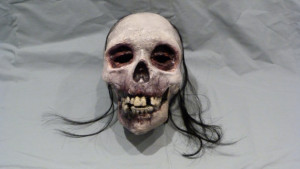 In a discovery that has shaken the archaeological community a prehistoric skeleton in the Balangoda area, suspected to be 3,000 year old Chinese tradesman, was uncovered yesterday fuelling debate that this could be the very first Konde Bandapu Cheena. The skeleton was clutching a purchase order dated 2382 BC for 11,000 tons of ivory in exchange for a 3 vats of Hot Butter Cuttlefish.
In a discovery that has shaken the archaeological community a prehistoric skeleton in the Balangoda area, suspected to be 3,000 year old Chinese tradesman, was uncovered yesterday fuelling debate that this could be the very first Konde Bandapu Cheena. The skeleton was clutching a purchase order dated 2382 BC for 11,000 tons of ivory in exchange for a 3 vats of Hot Butter Cuttlefish.
It is expected that the discovery will help Linguists figure out why the Chinaman with the ponytail has long been associated with a Sri Lankan symbol for gullibility. Professor Madhuma Bandara, Head of Peradeniya Anthropology Department commenting on the discovery said “Chinese traders bought elephant tusks, gems and gallons of crude oil which was abundant in ancient Lanka, in exchange for obscure dishes like Belly Pork in Oyster sauce or Fried Beef with Kang Kung. The hapless locals, convinced they had swindled the Chinaman, laughed at his foolishness and his hairstyle. China then proceeded to get rich, and we’re still laughing.”
The Grand Master Emeritus at Beijing University’s History department was unimpressed by the discovery. “We no impressed,” he said. His translator added that the Emeritus had a particular speech impediment that omitted prepositions and tenses. “We don’t all talk like that, you stereotyping pricks.”
While skeletons of ponytailed Chinamen have been found as early as 1987, this latest discovery could trump them all. Asked for a comment while dining at Chinese Dragon, Scholar of Archaeology at Ruhuna, Professor Kavantissa Maha Devi scoffed at the theory that this was a tradesman adding “As if they had Hot Butter Cuttlefish in those days? You think I’m a konde bandapu cheena?”
 NewsCurry Breaking news and serving it up in pieces
NewsCurry Breaking news and serving it up in pieces
